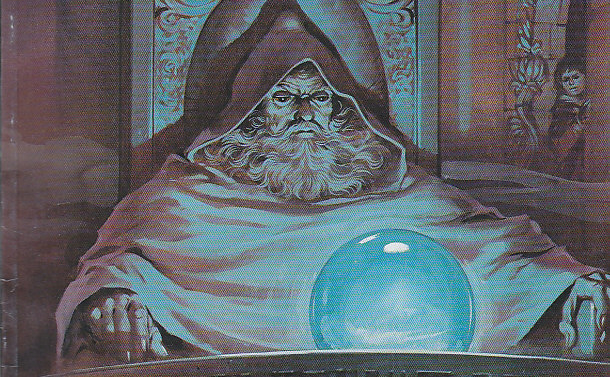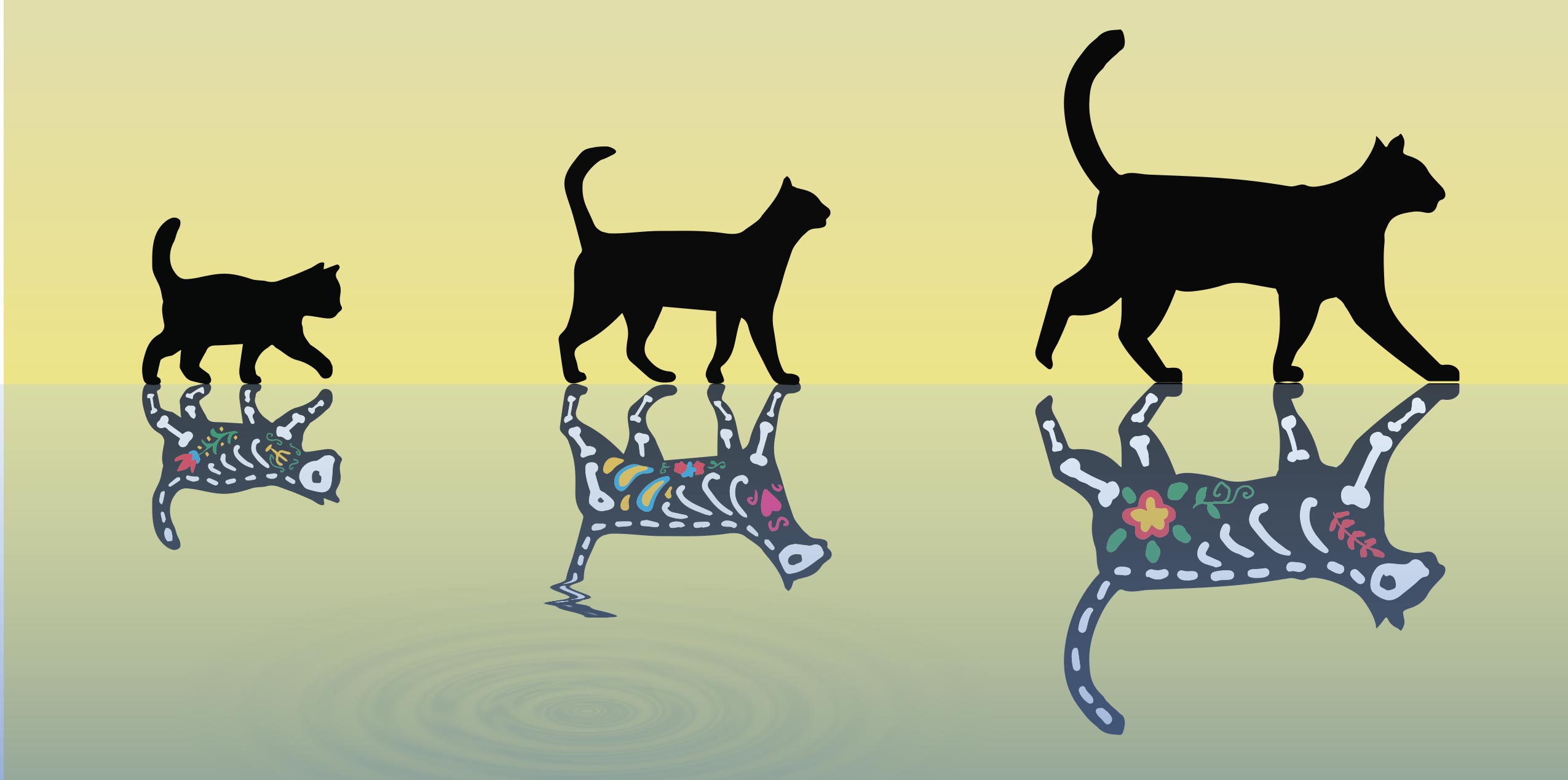
Les scientifiques de l’ETH Zurich ont fait des progrès en créant les chats plus lourds de Schrödinger, qui peuvent être à la fois vivants (en haut) et morts (en bas) en même temps. Crédit : Yiwen Chu/ETH Zurich
Des chercheurs de l’ETH Zurich ont créé le chat de Schrödinger le plus lourd à ce jour en plaçant un cristal dans une superposition de deux états d’oscillation. Leurs résultats pourraient conduire à des qubits plus puissants et aider à expliquer pourquoi les qubits ne sont pas observés dans la vie quotidienne.
- Des chercheurs de l’ETH Zurich ont créé le chat le plus lourd de Schrödinger à ce jour.
- Pour cela, ils ont combiné un cristal oscillant avec un circuit supraconducteur.
- Ils espèrent mieux comprendre pourquoi les effets quantiques disparaissent dans le monde macroscopique.
Même si vous n’êtes pas un physicien quantique, vous avez probablement entendu parler du chat de Schrödinger. Erwin Schrödinger a proposé des chats qui pourraient être à la fois vivants et morts en même temps dans une expérience de pensée en 1935. Le paradoxe évident – après tout, dans la vie de tous les jours, nous ne voyons que des chats vivants ou vivants. ou Dead – a incité les scientifiques à essayer de réaliser des situations similaires en laboratoire. Jusqu’à présent, ils ont pu le faire en utilisant, par exemple, des atomes ou des molécules dans des états de superposition mécaniques quantiques à deux endroits en même temps.
À l’ETH, une équipe de chercheurs dirigée par Yiwen Chu, professeur au Solid State Physics Laboratory, a créé un chat de Schrödinger considérablement plus lourd en plaçant un petit cristal dans une superposition de deux états d’oscillation. Leurs résultats, publiés cette semaine dans la revue scientifique Science, pourraient conduire à des qubits plus puissants et éclaircir le mystère de l’absence de superpositions quantiques dans le monde macroscopique.
chat dans une boite
Dans l’expérience de pensée originale de Schrödinger, un chat est enfermé dans une boîte métallique contenant des matières radioactives, un compteur Geiger et une fiole de poison. Dans un certain laps de temps – une heure, par exemple -[{ » attribute= » »>atom in the substance may or may not decay through a quantum mechanical process with a certain probability, and the decay products might cause the Geiger counter to go off and trigger a mechanism that smashes the flask containing the poison, which would eventually kill the cat. Since an outside observer cannot know whether an atom has actually decayed, he or she also doesn’t know whether the cat is alive or dead – according to quantum mechanics, which governs the decay of the atom, it should be in an alive/dead superposition state. (Schrödinger’s idea is commemorated by a life-size cat figure outside his former home at Huttenstrasse 9 in Zurich).

In the ETH Zurich experiment, the cat is represented by oscillations in a crystal (top and blow-up on the left), whereas the decaying atom is emulated by a superconducting circuit (bottom) coupled to the crystal. Credit: Yiwen Chu / ETH Zurich
“Of course, in the lab we can’t realize such an experiment with an actual cat weighing several kilograms,” says Chu. Instead, she and her co-workers managed to create a so-called cat state using an oscillating crystal, which represents the cat, with a superconducting circuit representing the original atom. That circuit is essentially a quantum bit or qubit that can take on the logical states “0” or “1” or a superposition of both states, “0+1”. The link between the qubit and the crystal “cat” is not a Geiger counter and poison, but rather a layer of piezoelectric material that creates an electric field when the crystal changes shape while oscillating. That electric field can be coupled to the electric field of the qubit, and hence the superposition state of the qubit can be transferred to the crystal.
Simultaneous oscillations in opposite directions
As a result, the crystal can now oscillate in two directions at the same time – up/down and down/up, for instance. Those two directions represent the “alive” or “dead” states of the cat. “By putting the two oscillation states of the crystal in a superposition, we have effectively created a Schrödinger cat weighing 16 micrograms,” explains Chu. That is roughly the mass of a fine grain of sand and nowhere near that of a cat, but still several billion times heavier than an atom or molecule, making it the fattest quantum cat to date.
In order for the oscillation states to be true cat states, it is important that they be macroscopically distinguishable. This means that the separation of the “up” and “down” states should be larger than any thermal or quantum fluctuations of the positions of the atoms inside the crystal. Chu and her colleagues checked this by measuring the spatial separation of the two states using the superconducting qubit. Even though the measured separation was only a billionth of a billionth of a meter – smaller than an atom, in fact – it was large enough to clearly distinguish the states.
Measuring small disturbances with cat states
In the future, Chu would like to push the mass limits of her crystal cats even further. “This is interesting because it will allow us to better understand the reason behind the disappearance of quantum effects in the macroscopic world of real cats,” she says. Beyond this rather academic interest, there are also potential applications in quantum technologies. For instance, quantum information stored in qubits could be made more robust by using cat states made up of a huge number of atoms in a crystal rather than relying on single atoms or ions, as is currently done. Also, the extreme sensitivity of massive objects in superposition states to external noise could be exploited for precise measurements of tiny disturbances such as gravitational waves or for detecting dark matter.
Reference: “Schrödinger cat states of a 16-microgram mechanical oscillator” by Marius Bild, Matteo Fadel, Yu Yang, Uwe von Lüpke, Phillip Martin, Alessandro Bruno and Yiwen Chu, 20 April 2023, Science.
DOI: 10.1126/science.adf7553







More Stories
Quelle est la prochaine grande nouveauté en matière de perte de poids ?
Une nouvelle découverte pourrait réécrire les livres sur la génétique
Compenser le sommeil le week-end pourrait réduire d’un cinquième le risque de maladie cardiaque – étude | Maladie cardiaque